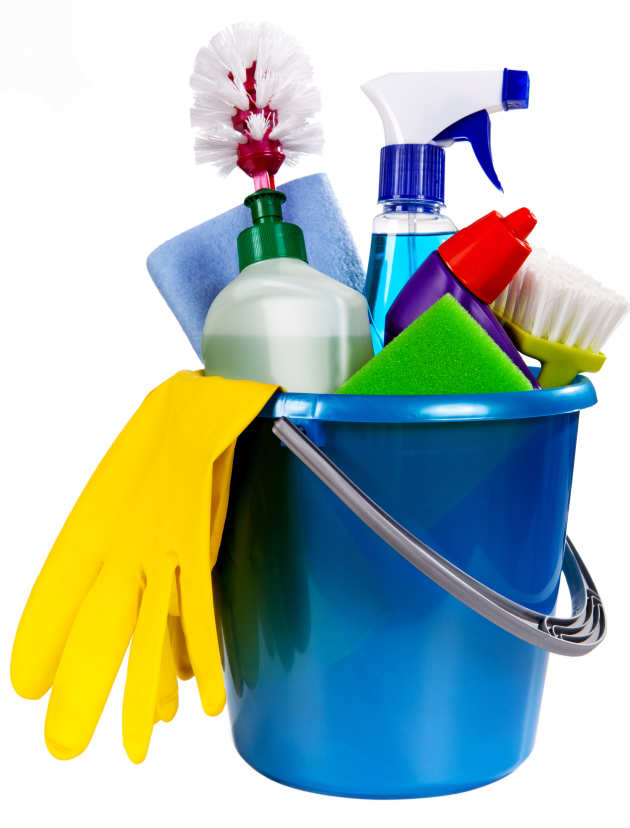Effective Everyday Cleaning Techniques: Finest Practices for Defrosted and Cleaned Every Few Months
Effective Everyday Cleaning Techniques: Finest Practices for Defrosted and Cleaned Every Few Months
Blog Article
Understanding the Demand for Completely Sanitizing and Disinfecting Frequently Touched Surface Areas in High-Traffic Areas
In the world of public health and safety and security, the careful sanitation and sanitization of regularly touched surfaces in high-traffic areas stand as vital steps in preventing the spread of harmful pathogens. By exploring the various facets of surface area sanitation, from the dangers connected with overlooking cleaning protocols to the efficient methods that can be employed, a more clear understanding emerges of the important role these techniques play in guarding public health and wellness.
Value of Surface Disinfection
Emphasizing the detailed sanitation of high-traffic surfaces is crucial in keeping a sanitary atmosphere and avoiding the spread of harmful virus. High-touch surfaces such as door takes care of, light buttons, elevator switches, and counter tops function as reproducing grounds for infections and microorganisms. Routine sanitation of these surfaces is vital to decrease the threat of contamination and transmission of diseases.
By implementing a durable sanitation protocol, organizations and organizations can produce a more secure atmosphere for customers, visitors, and staff members. Correct surface disinfection not just alleviates the spread of transmittable diseases however also instills confidence in the tidiness and safety and security of the premises. This proactive strategy demonstrates a commitment to health and wellness and health, which is specifically crucial in high-traffic areas where the possibility of direct exposure to virus is enhanced.
Additionally, surface disinfection plays a critical role in overall infection control techniques. Combined with hand hygiene methods, using masks, and preserving physical distancing, detailed sanitation of high-touch surfaces forms a comprehensive defense against the transmission of harmful microbes. Focusing on surface area sanitation is a necessary part of an alternative strategy to health and wellness in common areas.
Dangers of Disregarding Cleaning Practices
Overlooking extensive disinfection of high-traffic surfaces dramatically heightens the danger of microbial and viral contamination, posturing a significant hazard to the wellness and security of individuals often visiting these rooms. Failure to implement correct cleansing methods can result in the accumulation and spread of harmful microorganisms, consisting of infections and germs, on frequently touched surfaces such as doorknobs, hand rails, elevator buttons, and countertops.

In addition, neglecting the value of thorough cleaning not just jeopardizes the well-being of people yet also threatens efforts to keep a clean and sanitary setting. It is important to recognize the value of proper disinfection protocols in preventing the spread of infections and guarding public health.
Reliable Disinfection Approaches
To keep optimum cleanliness and decrease the danger of contamination on high-traffic surfaces, utilizing efficient disinfection methods is essential. One of the most effective and typical disinfection approaches is using chemical anti-bacterials.
An additional effective approach is the use of UV-C light. UV-C light has been shown to be effective in killing a vast array of microbes by interrupting their DNA structure, hence avoiding them from duplicating. Nonetheless, it is important to utilize UV-C light properly, making sure that the appropriate intensity and direct exposure time are related to attain the preferred sanitation results.
Additionally, using vapor cleaning as a disinfection method can be highly effective, particularly on surface areas that are heat-resistant. Steam can pass through permeable surface areas and kill germs, infections, and other virus effectively. When utilizing steam cleaning, it is crucial to make sure that the surface reaches the needed temperature for an adequate amount of time to ensure proper disinfection.
Impact on Public Health
The upkeep of high standards of cleanliness and disinfection on high-traffic surface areas plays an essential function in securing public health and wellness. Regularly touched surfaces in locations with high step, such as doorknobs, handrails, elevator switches, and toilet facilities, work as breeding premises for harmful microorganisms. Failing to appropriately disinfect these surfaces can cause the quick spread of transmittable diseases within neighborhoods. By applying comprehensive disinfection protocols, the risk of transmission of viruses, germs, and various other bacteria can be significantly decreased.
Reliable hygiene techniques not just secure individuals from dropping moved here ill however also contribute to the total well-being of culture. Public health authorities highlight the significance of maintaining tidy settings to protect against break outs and have the spread of health problems. In high-traffic locations like airports, institutions, health centers, and public transport systems, the effect of rigorous disinfection procedures can not be underrated. Focusing on the sanitization of regularly touched surface areas is an aggressive strategy to advertising public wellness and enhancing the safety of individuals in common spaces.
Executing Regular Cleansing Protocols
Without delay instituting and sticking to a constant schedule of cleansing protocols is vital for keeping the tidiness and safety of high-traffic surface areas. Regular cleansing methods are vital in preventing the accumulation of germs and microorganisms on regularly touched surfaces, specifically in areas with high foot traffic. By carrying out a methodical strategy to cleansing, organizations can efficiently minimize the threat of disease transmission and produce a much healthier environment for employees, customers, and the general public.
To establish an effective cleaning timetable, it is important to determine high-traffic locations that need frequent attention. These areas might consist of doorknobs, hand rails, elevator switches, toilet facilities, and shared devices. Carrying out a regular cleansing regimen that targets these surfaces multiple times a day can considerably decrease the spread of dangerous microorganisms and viruses.
Moreover, utilizing suitable cleaner and disinfectants is essential to you can try this out making sure that surfaces are extensively sterilized. Routine training of cleaning team on correct cleaning techniques and the significance of adherence to the cleansing routine is additionally crucial in preserving a hygienic environment. By focusing on regular cleansing protocols, organizations can promote the health and well-being of people that engage with these high-traffic surface areas.

Final Thought
In conclusion, it is critical to focus on thorough disinfection and sanitization of often touched surface areas in high-traffic locations to avoid the spread of hazardous microorganisms and maintain public health and wellness. It is critical to acknowledge the value of preserving clean surfaces in high-traffic areas to make certain the health of the community.
In the realm of public health and wellness and safety, the thorough disinfection and sanitization of often touched surfaces in high-traffic locations stand as extremely important steps in stopping the spread of unsafe virus. By exploring the numerous aspects of surface area disinfection, from the threats linked with disregarding cleaning procedures to the effective methods that can be utilized, a clearer understanding emerges of the vital role these techniques play in securing public health.In addition, utilizing vapor cleansing as a disinfection technique can be highly efficient, specifically on surface areas that are heat-resistant. When utilizing vapor cleaning, it is essential to make certain that the surface area reaches the called for temperature for an enough amount of time to assure proper sanitation.
In conclusion, it is crucial to focus on complete disinfection and sanitization of often touched surface areas in high-traffic areas to protect against the spread of dangerous pathogens and see page keep public health and wellness.
Report this page